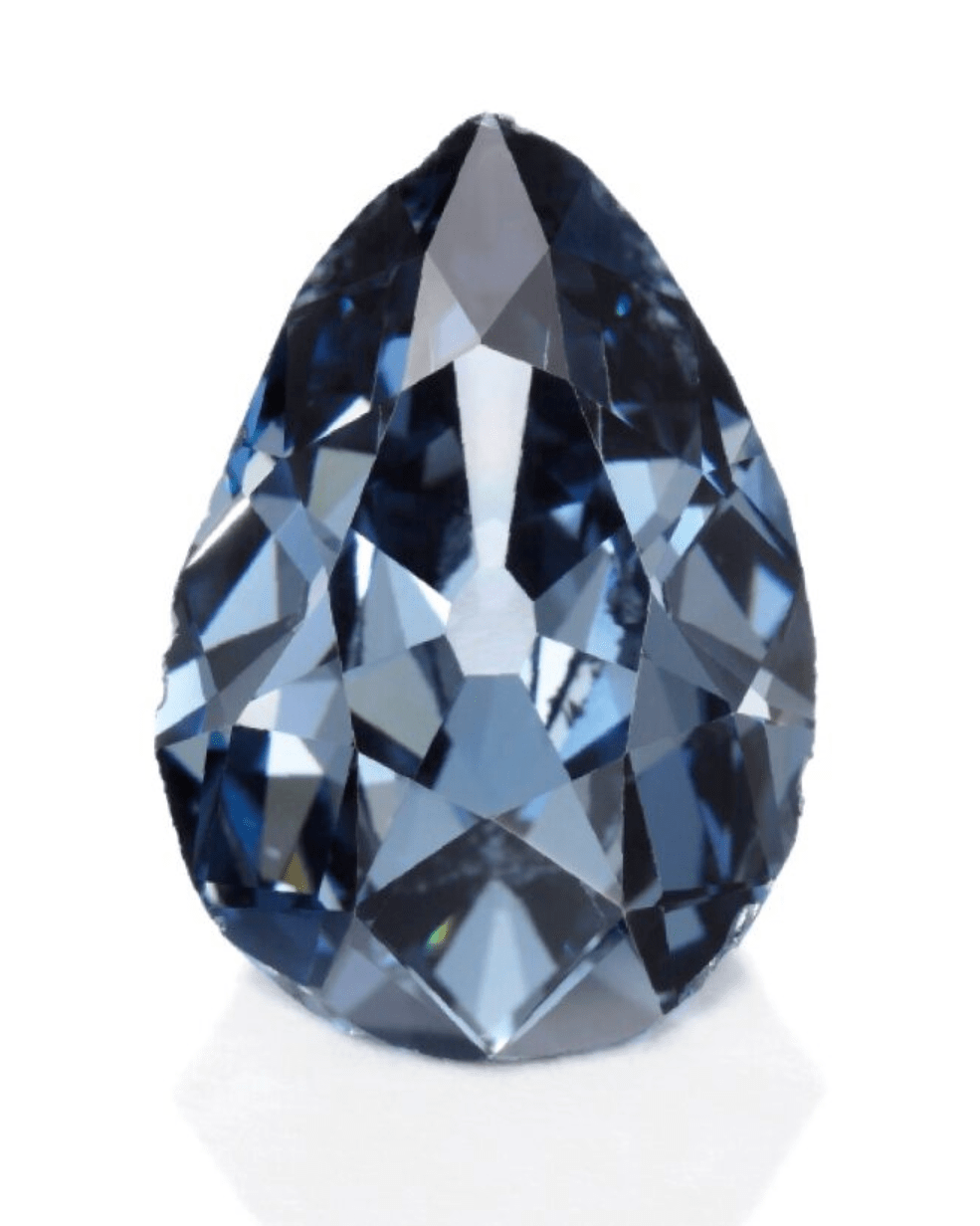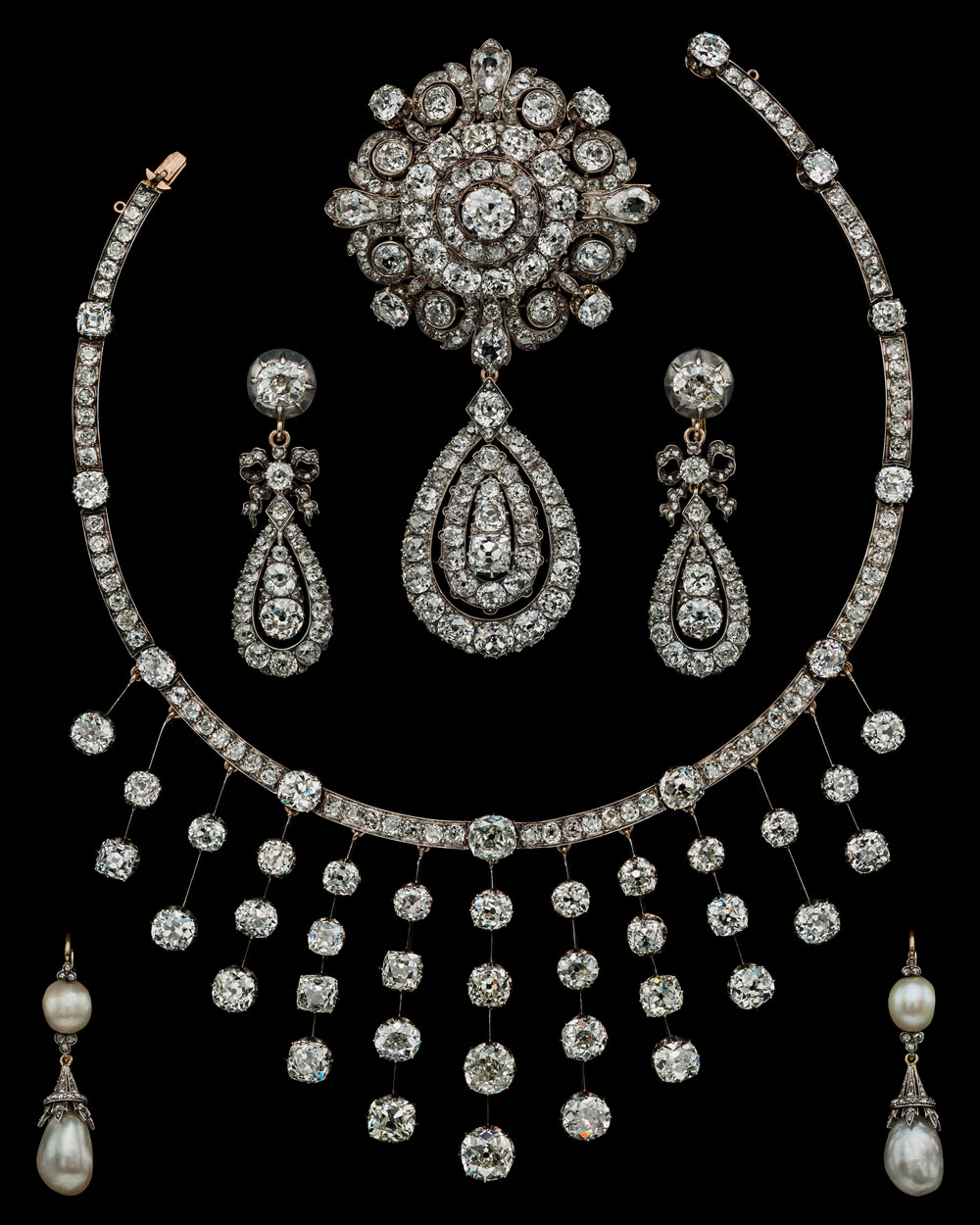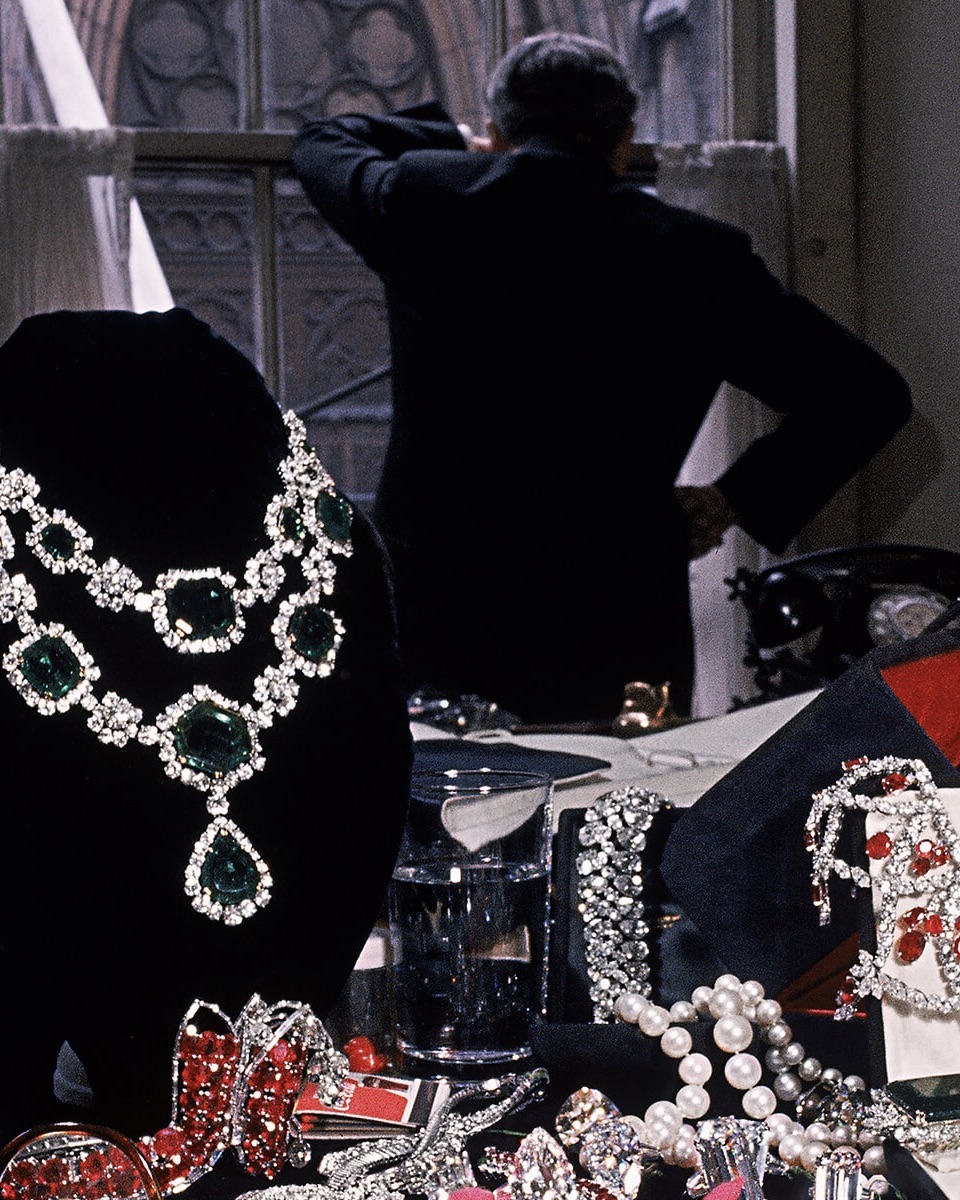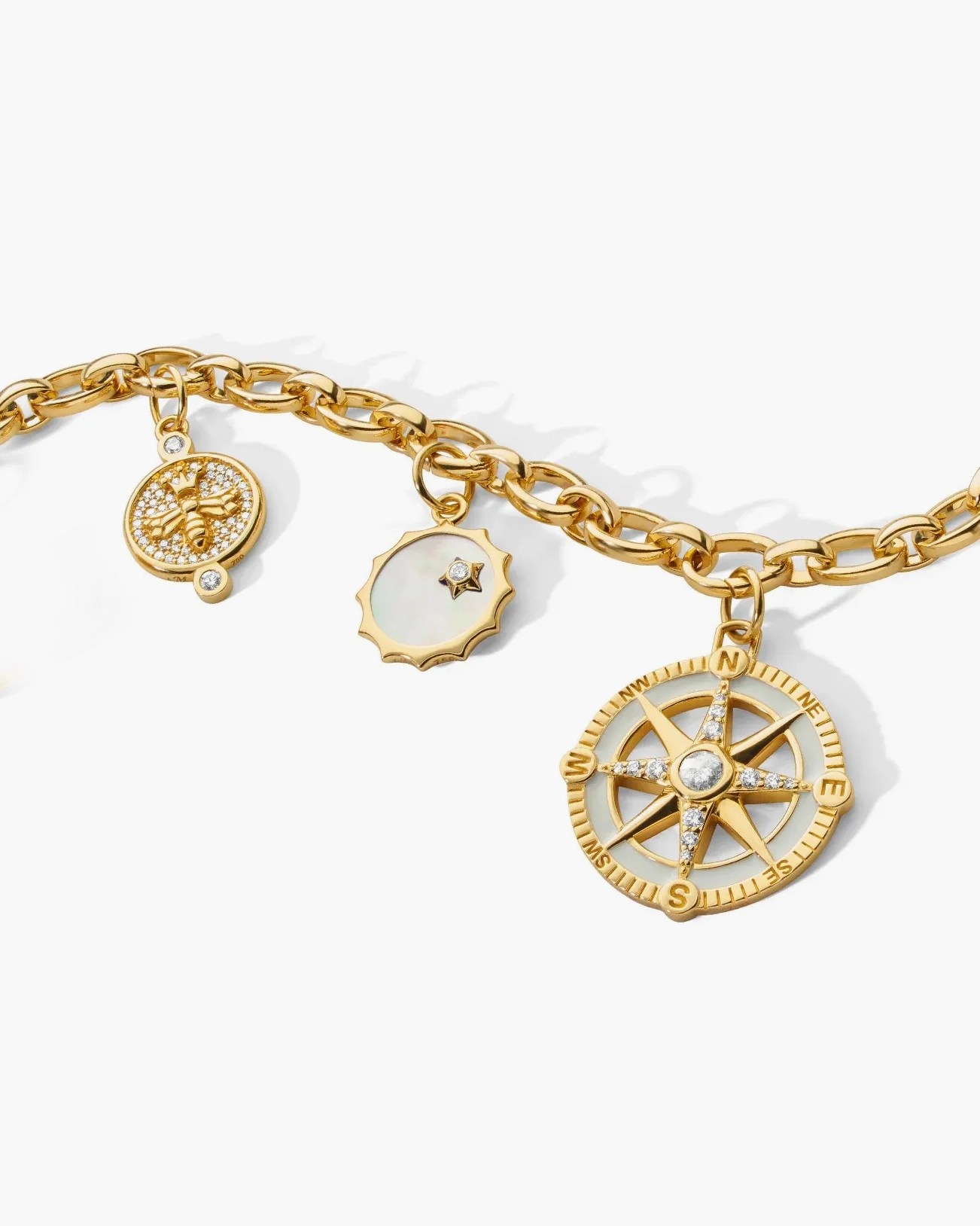The Complete History of Diamond Cutting
Explore the captivating history of natural diamond cutting from ancient India to modern innovations.
Written by: Grant Mobley
Updated: November 4, 2025

Since their discovery, natural diamonds have captivated humanity with their unparalleled hardness and mysterious beauty. Their extreme resistance to shaping and polishing filled them with folklore and superstition. Because of their unique properties, it took thousands of years before humans devised the first successful diamond cutting techniques.
Ahead, uncover the fascinating history of diamond cutting—from ancient traditions to the innovations that shaped today’s most brilliant gems.
Meet the Expert

- Grant Mobley is the Jewelry & Watch Editor of Only Natural Diamonds.
- He is a GIA Diamonds Graduate.
- He has over 17 years of jewelry industry experience, starting with growing up in his family’s retail jewelry stores.
Early References to Diamond Cutting in Indian and Islamic Texts
Historical texts indicate that by the 6th century, Indian lapidary workers, and by the 10th century, Islamic jewelers used diamond dust to polish other gems; however, diamonds themselves remained uncuttable.
An Indian text from the 13th century, the Agastimata, is the first to mention diamond cutting, stating: “The diamond cannot be cut using metals and gems of other species, but it also resists polishing; the diamond can only be polished using other diamonds.” Supporting this timeline, noted jewelry historian Jack Ogden reports having seen 13th-century Islamic jewelry featuring simple table-cut diamonds. These would likely be the first known cut diamonds, marking the beginning of the story of diamond cutting and the development of cutting techniques.
The Roman Era: Diamonds Before Cutting Techniques

Although the Romans valued diamonds for jewelry as early as 100 BCE, they could use only uncut or rough diamonds. The Roman philosopher Pliny described diamonds as the most precious of all possessions in his book Naturalis Historia in AD 79. Despite the Romans’ obsession with the gem, historical evidence suggests they likely had access only to imperfect diamond crystals, as India – the sole source of diamonds until the 18th century – reserved the best for its native market. The decline of the Roman Empire led to the disappearance of diamonds from European jewelry, as Roman merchants ceased to bring them from India. Nevertheless, diamonds remained popular in Indian and Islamic cultures.
The Birth of European Diamond Cutting in Venice


European diamond cutting began in Venice around 1330, following the opening of the first trade routes to the East since the fall of the Roman Empire. Venetian merchants now had access to diamonds, and it is likely that they also learned the rudimentary cutting techniques practiced by Islamic merchants and brought them to Venice. Although perfectly shaped diamond crystals were still rare in Europe, one could argue that the scarcity of “ideal” rough stones prompted Europeans to begin cutting diamonds and further advance the techniques.
Tools That Transformed Diamond Cutting in the 15th Century
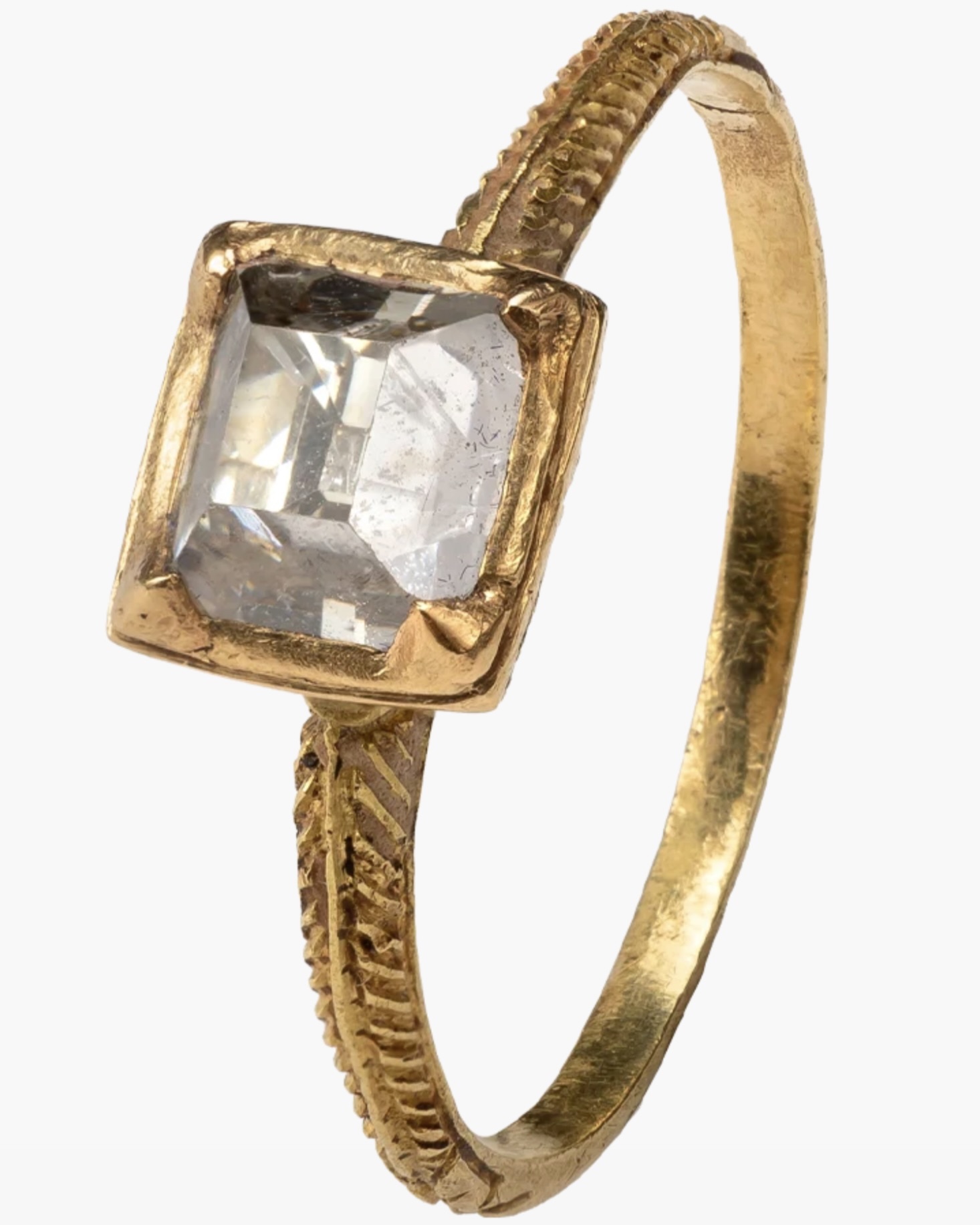
The advent of continuous rotary motion in tools during the 15th century revolutionized diamond cutting, moving beyond superficial polishing of the rough crystals and ‘cleaving’ or breaking, the diamond along its weakest points. This innovation allowed cutters to grind facets more efficiently, expanding the possibilities for creative designs. The Portuguese conquest of Goa in 1510—soon to become India’s main diamond port—significantly increased Europe’s access to high-quality diamonds for the first time.
The Rise of Diamond Cutting Hubs in Antwerp and Paris
Europe’s economic center shifted to the North Sea, and as a result, the first diamond-cutting communities emerged in Paris, Bruges, and Antwerp. The cutters were mostly Jewish, as it was one of the few professions in which they were not barred from participating at the time. By the end of the 15th century, cutting had advanced beyond the limitations of the rough, marking the true beginning of the art.
The 16th century witnessed a shift from mere polishing to genuine faceting, resulting in the creation of new cuts. Longer rectangular stones were forerunners to the baguette cut, while the most popular cuts were more refined versions of the table and point cuts. Many earlier cuts also received additional facets to enhance their appearance.
The Rose Cut and Mughal Cut: Innovations in Diamond Cutting Styles

Most importantly, the rose cut emerged during this period and gained popularity for its flat-bottomed design with a crown covered in diamond-shaped facets. Belgian and Dutch cutters specialized in this cut, turning thinner bits of rough into the new standard rose cut. As its popularity grew, the rose cut evolved, with the dome becoming higher to accommodate bulkier rough.

Simultaneously, diamond cutting in India also advanced. Indian techniques, while differing in materials and methods—such as the use of wood versus steel—shared similarities with European practices. The Mughal cut became prominent between the 16th and 18th centuries, characterized by a large flat base, organic outline, and a sloping array of smaller facets. Unlike most Western cuts, Indian cutters shaped the Mughal cut to follow the natural form of the rough, making it better understood as a style than a specific shape.
The Brilliant Cut Revolution: Diamond Cutting for Light Performance
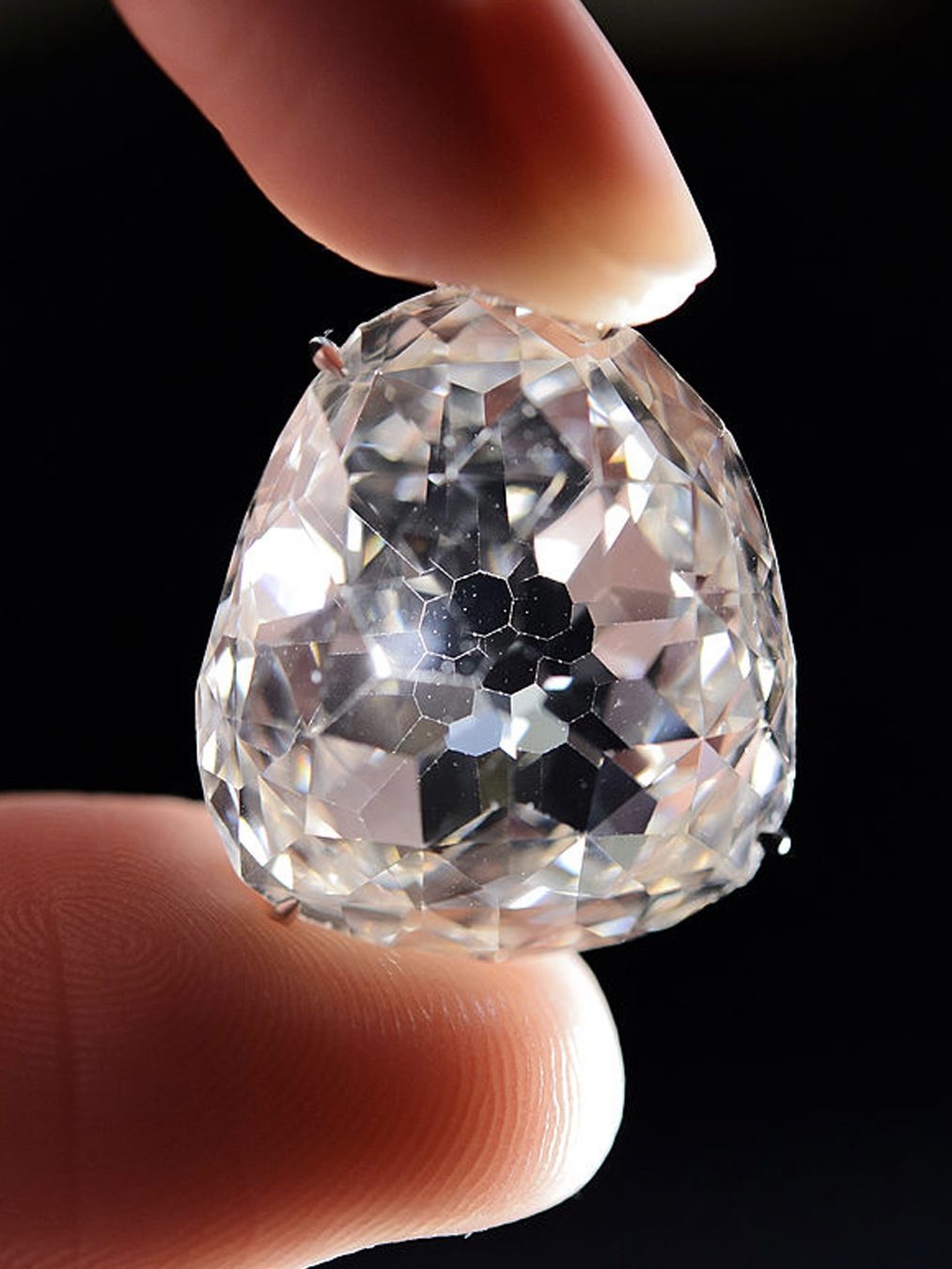
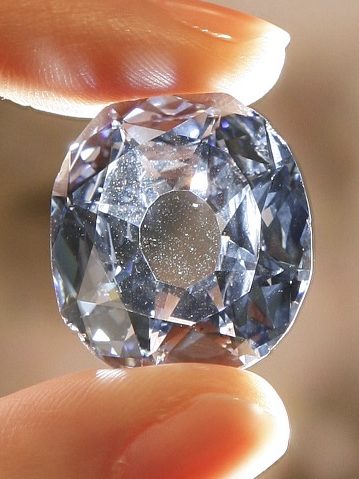
The 17th century brought a new vision of what diamonds should look like. The opulent candlelit dinner parties of the era demanded more brilliance, leading to the development of the brilliant cut. Early versions took on different outlines depending on the shape of the rough diamond.
The opulent candlelit dinner parties of the 17th century demanded more brilliance, leading to the development of the brilliant cut.
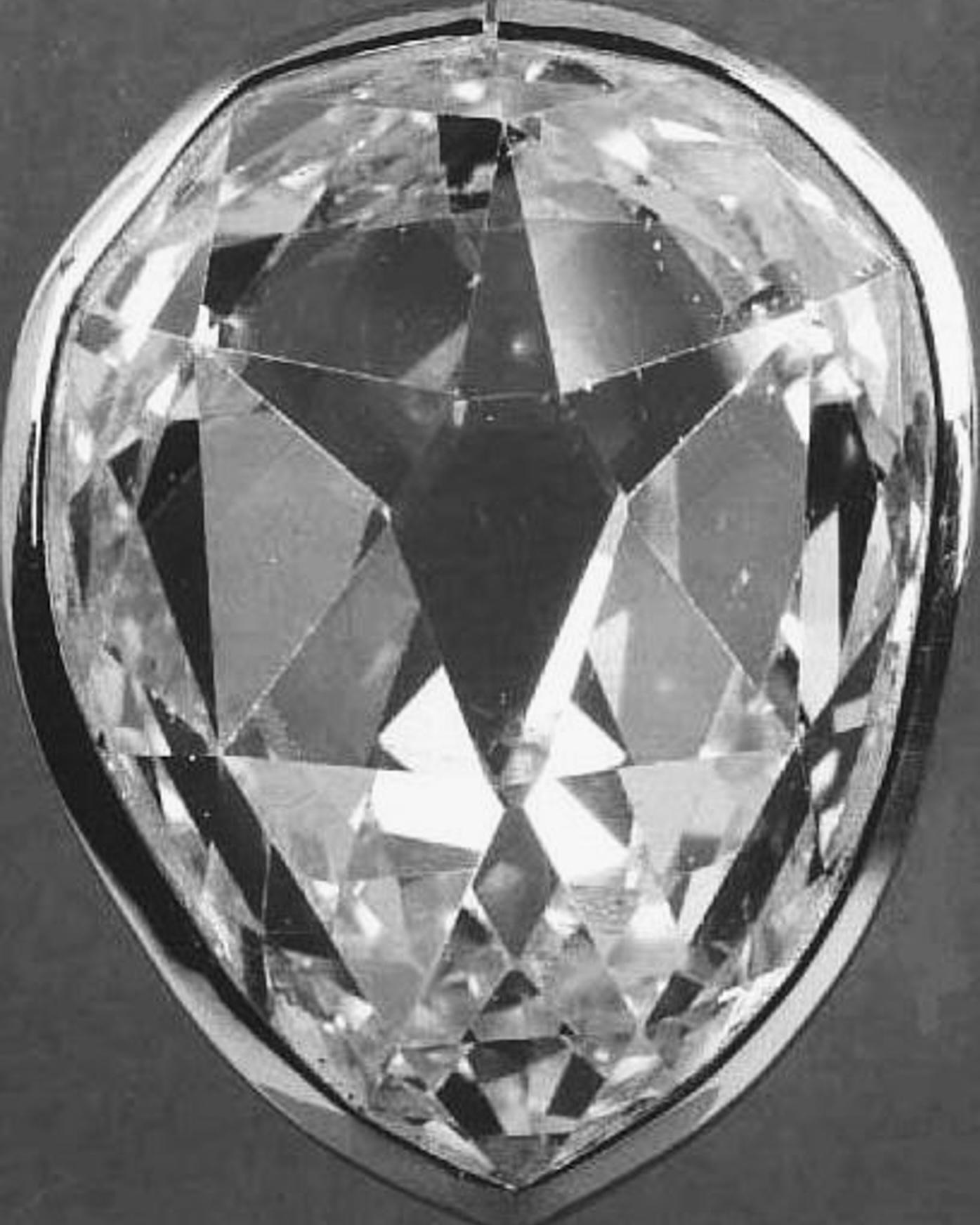
Most importantly, cutters designed these stones with pavilion-based proportions, concentrating most of the weight in the lower part of the gem. This approach allowed more light to reflect through the top, creating the signature sparkle we recognize in diamonds today. This pavilion-based style is now the foundation for most modern cuts.
From Mazarin to Marquise: The Evolution of Brilliant Diamond Cuts
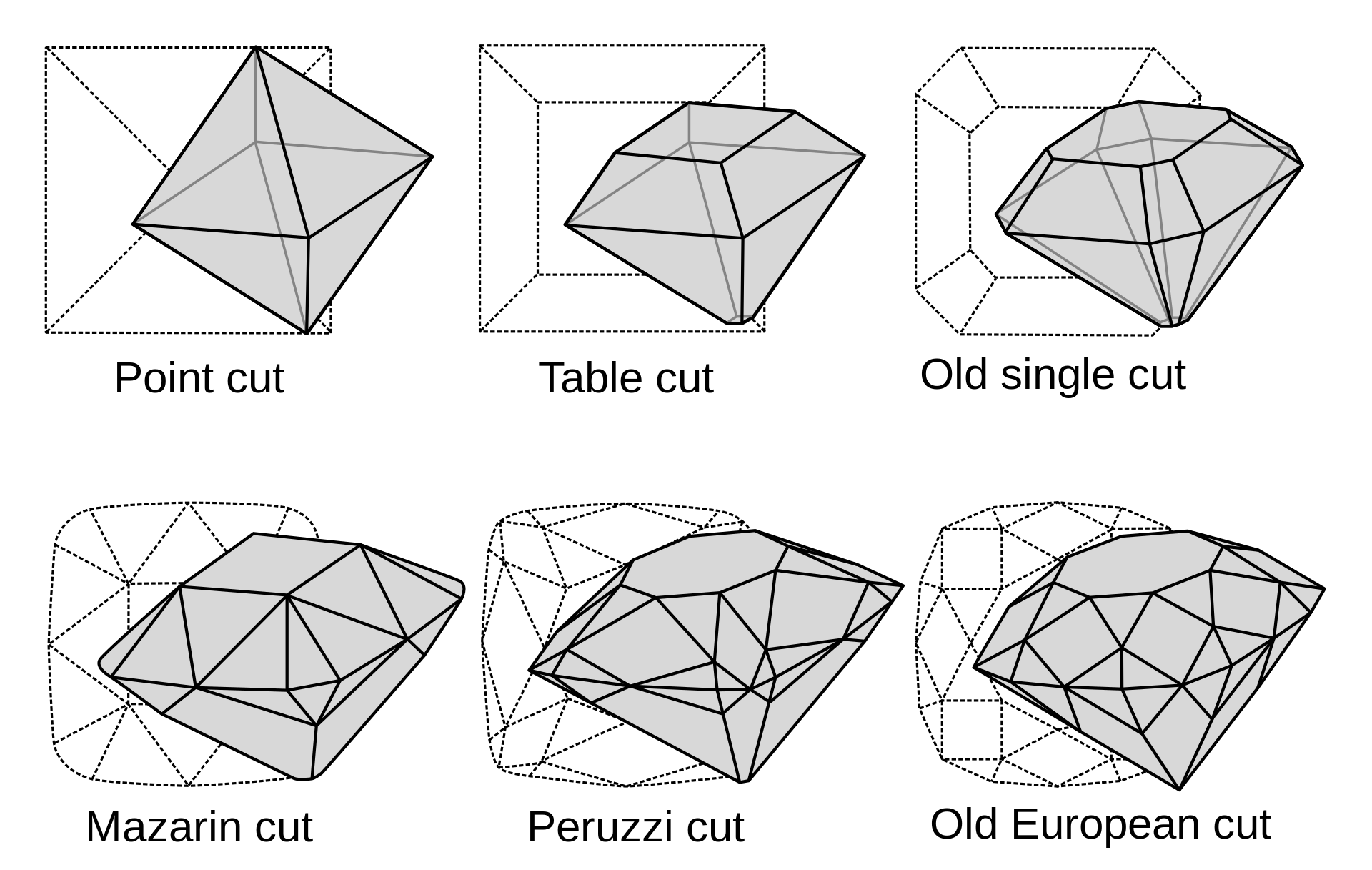
The Mazarin cut, invented by French Cardinal Mazarin in the mid-1600s, was the first true brilliant cut, featuring 17 crown facets. The Peruzzi cut, developed in the 1700s, improved upon the Mazarin with 33 crown facets and became known as the triple-cut brilliant. Like the Mazarin cut, the Peruzzi cut was cushion-shaped and served as the inspiration for the old mine cut.
King Louis XV of France commissioned the marquise cut in the mid-18th century to reflect the shape of his mistress Marquise de Pompadour’s mouth. This cut, along with others, represented variations of the brilliant design suited to different rough shapes. Despite these innovations, jewelers continued to favor table cuts, point cuts and rose cuts well into the 18th century. As diamonds from India grew scarcer, they began recutting older stones en masse to enhance brilliance and maximize sparkle. That recutting is why so few diamonds cut before this period still exist in their original form.
Diamond Cutting in the 18th Century: Scarcity and Innovation
As Indian diamond mines neared exhaustion, prospectors discovered the first diamonds in Brazil in the early 18th century. The area was fittingly named Diamantina. By 1730, the steady production of Brazilian diamonds had become a reality. Individual miners found many small deposits around Brazil during the 18th century, significantly boosting the global supply of rough diamonds. Once reserved for European nobility because of their limited supply, diamonds became accessible to a broader public, fueling growth in the diamond-cutting industry. The old mine cut, an evolution of the Peruzzi cut, gained prominence during this period.
The 19th Century Diamond Boom: South Africa and New Technologies
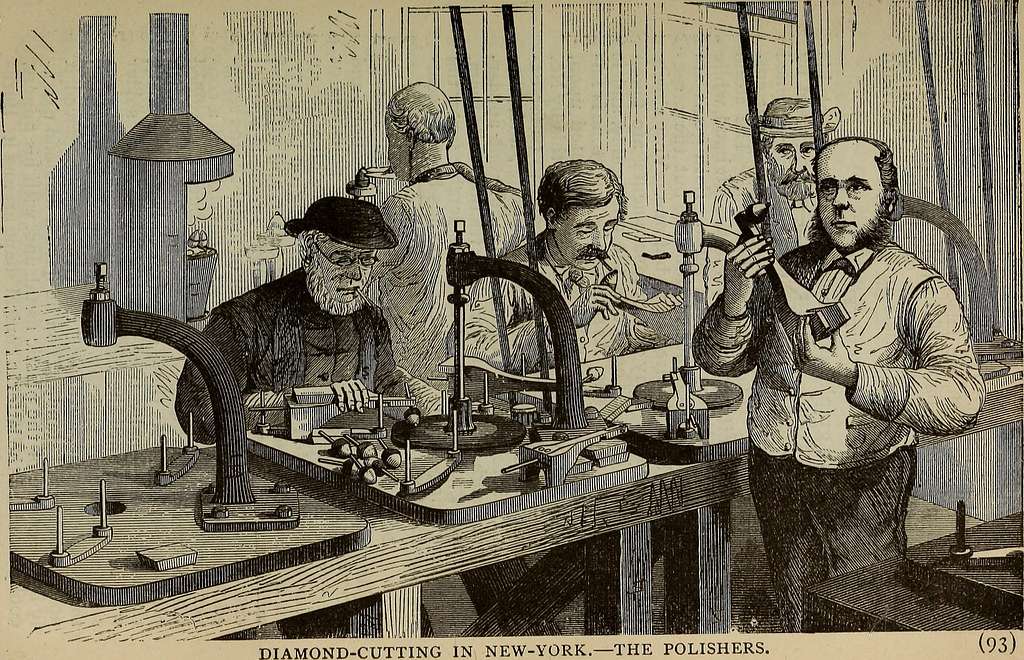
The rise of a prosperous middle class in Europe and the United States during the 19th century led to a surge in the popularity of diamond jewelry. But as Brazilian supply dwindled by the mid-19th century, diamond prices rose, and European cutting centers, particularly in London, Antwerp and Amsterdam, faced challenges.
Fortuitously, the discovery of the Eureka diamond by a 15-year-old boy in South Africa in 1867 marked a pivotal moment for the diamond industry. The find sparked the South African diamond rush, revived the Dutch and Belgian diamond-cutting industries, and provided diamonds at a time when it seemed the world’s supply had come to an end.
The Modern Era of Diamond Cutting: Scientific Precision and Patents


The South African diamond rush also drove significant innovations in diamond cutting. The bruting machine, invented in the early 1870s, made possible the first truly round brilliant cuts, known as Old European cuts. The motorized diamond saw, invented by a Belgian in 1900, revolutionized diamond shaping. American cutter Henry Morse perfected the round brilliant cut using scientific principles of light performance, and Marcel Tolkowsky later published the definitive work on diamond cutting, establishing the brilliant-cut known today.
The Globalization of Diamond Cutting: From Europe to India

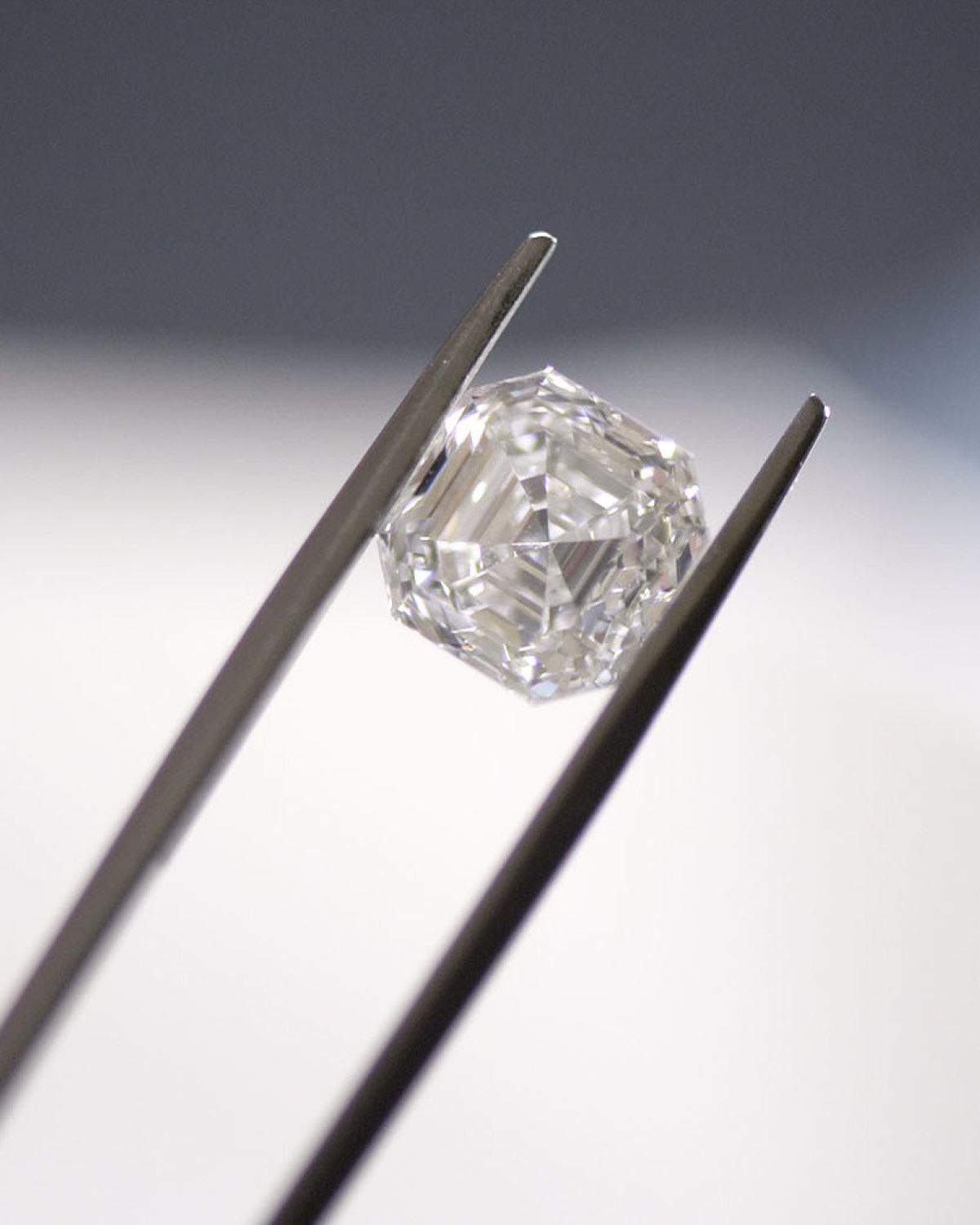
In addition to perfecting the round brilliant cut, master cutters of the 20th century used new technology and knowledge to create modern cuts—most notably the Asscher, designed by Joseph Asscher in 1902 as the first diamond cut to be patented. Other familiar cuts, including the emerald, oval, princess and radiant, also emerged in the mid-20th century.
The European diamond-cutting centers where much of this innovation had taken place over the last 400 years, were predominantly Jewish-owned and operated. Sadly, they experienced devastation during World War II and never fully recovered. But with the help of Jewish immigrants and refugees, new cutting centers emerged elsewhere, most notably in Israel and India. Today, India leads the world in diamond cutting — a fitting role for the country that first discovered and likely first cut diamonds.
The history of diamond cutting is a story of innovation, artistry, and resilience.
The history of diamond cutting is a story of innovation, artistry, and resilience. From India to Venice and beyond, the brilliance and beauty of natural diamonds, shaped by centuries of craftsmanship, continue to captivate and provide livelihoods for millions.

